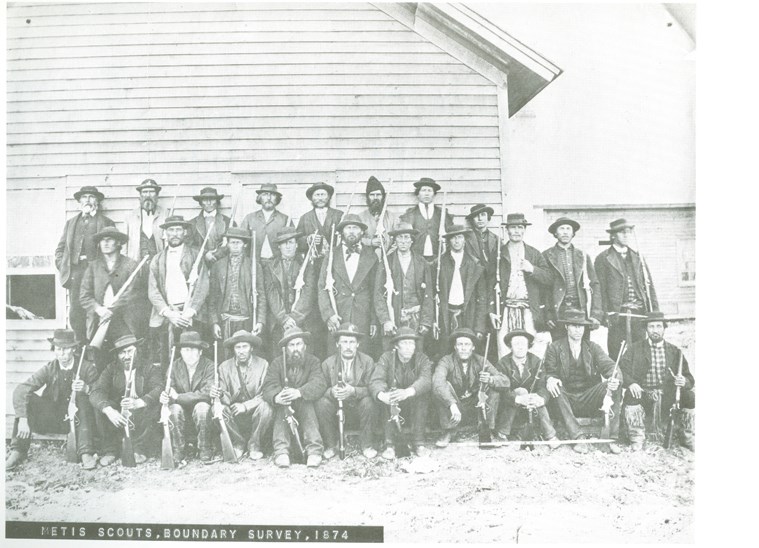Former Prime Minister Joe Clark once said that one of Canada’s problems is that too many Canadians do not know our history! For years, we watched a lot more American history on TV than Canadian history. For one example, in the 1950s, there was a great interest by boys to buy a raccoon or fake raccoon hat to emulate the current American craze over Davy Crockett – portrayed as a frontier hero in a Hollywood movie King of the Wild Frontier. Crockett died in 1836 at the Battle of the Alamo in Texas. This was totally remote from our own history. What is more — Crockett does not hold a candle to the exploits of many of our own explorers and our consummate frontiersmen, such as Radisson and Groseilliers that I have written about in recent History Corners. Yet, the story of these “coureurs-de-bois” has not really been told enough except in the CBC documentary CANADA. Take this photo of Métis scouts, buffalo hunters and interpreters who were hired by the Dominion government, to accompany the survey party of the International Boundary Commission in 1872. How many have heard of these men? It was not in our history books in school! After Canada became a federation in 1867, and three years later acquired Rupert’s Land (a large chunk of Western Canada) from the Hudson’s Bay Company, the government began planning in earnest for the opening of the west for settlement. The western part of the international boundary between the USA and Canada (Britain) had been agreed upon in 1818 to be at the 49th parallel. Now, it had to be surveyed. The Canadian government hired the Canadian Métis scouts. These men provided interpretive services between surveyors and any First Nations people and others who might come to question the work, they went ahead of the survey party to look for any problems, and they hunted to help feed the whole party. Because they were experienced plainsmen, they knew the land and the waterways and could advise the surveyors accordingly. They had experience in the wilderness having lived, roamed, hunted and traded in the area from Lake of the Woods, to the Rockies. By contrast, on the American side of this work, the American Boundary Commission had 230 armed men, two companies of cavalry and a company of infantry to accompany their surveyors! They seem to want to be prepared in case of conflicts with any tribes. It is true that the North Dakota Territory and the Montana Territory at the time had some settlements, Reservations and many fur trading forts not too far away from the boundary. Meanwhile, Manitoba had become a province in 1870, and another body of surveyors — the Dominion Land Surveyors were preparing the way for settlement. They were at work dividing the land into townships, sections and quarter sections. Only 10 years later, settlement was opening up in the eastern part of the West, and the York Farmers Colonization Company of Toronto was establishing Yorkton/York Colony in 1882 with settlers from Ontario and the British Isles.
Contact Terri Lefebvre Prince,
Heritage Researcher,
City of Yorkton Archives,
Box 400, 37 Third Avenue North
Yorkton, Sask. S3N 2W3
306-786-1722
heritage@yorkton.ca



